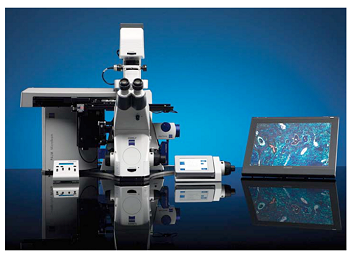The Jules Bordet Institute's Anatomical Pathology Department acquires laser microdissection technology
28/04/2021
The Jules Bordet Institute's Anatomical Pathology Department acquires laser microdissection technology.
 Since its creation, the Jules Bordet Institute has been devoted to understanding, treating and fighting cancer. The recent acquisition of high precision laser microdissection technology reflects this mission and will make it possible to refine our knowledge of the heterogeneity of tumours and of the tumour microenvironment. Another boost for Research, made possible thanks to the generous support of the "Friends of the Bordet Institute".
Since its creation, the Jules Bordet Institute has been devoted to understanding, treating and fighting cancer. The recent acquisition of high precision laser microdissection technology reflects this mission and will make it possible to refine our knowledge of the heterogeneity of tumours and of the tumour microenvironment. Another boost for Research, made possible thanks to the generous support of the "Friends of the Bordet Institute".
Tumour heterogeneity
In oncology, the goal of personalised medicine is to find the targeted treatment that is most appropriate for each patient on the basis of the characteristics of the cancer cells present. However, not all patients with the same tumour characteristics respond in the same way to the same treatment, some not responding at all while others respond 100%. By dissecting the tumour zones with a laser under a microscope and analysing individually the different tumour cell populations that constitute a cancer, it will be possible to identify these different populations that account for the heterogeneity of the treatment responses and thereby predict which treatment will be effective. Two genetically identical cells can have a different proteome (the entire set proteins produced by a cell) and generate two opposing responses: resistance of the tumour or the tumour's cellular death.
Tumour microenvironment: partner of tumour development
Research into the tumour microenvironment has intensified in recent years. It has now been established that the invasive nature of a cancer – and thus its ability to metastasize – is determined not only by the tumour genotype but also by its interactions with the microenvironment that influence tumour development and metastatic progression. The microenvironment of tumour cells consists of blood vessels, fibroblasts, adipocytes, immune cells and the soluble factors that these secrete. While in general these cells promote tumour growth, immune cells can also slow or stop the growth altogether. Dissection to isolate the different components of the matrix that constitutes the tumour microenvironment, with the utmost precisions and on a cell scale, will enable us to arrive at a better understanding of the tumour mechanism and to identify new treatment targets. The laser microdissection technology that the Anatomical Pathology Department is making available to researchers, combined with the expertise of our pathologists and the different genetic analysis platforms available at the Institute, will make it possible to characterise the dynamic of interactions between the tumour cells and their microenvironment in a multidisciplinary manner.
Acquiring today the leading edge equipment for the Jules Bordet Institute of tomorrow
This acquisition coupled with the Jules Bordet's imminent move to the Erasmus campus in Anderlecht will facilitate new cooperation between the teams and open up new prospects for cancer research. Another step forward for precision research made possible thanks to the financial support of the "Friends of the Bordet Institute".